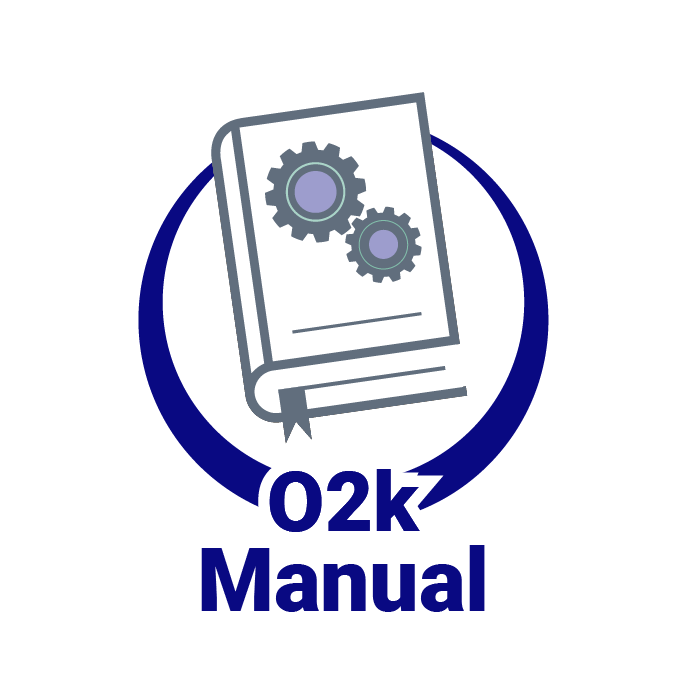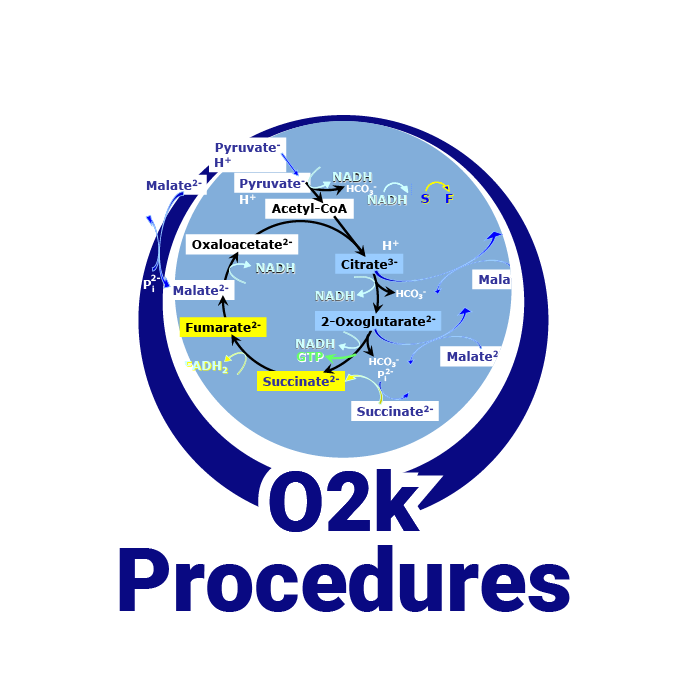 |
Oxygen sensor test |
MitoPedia O2k and high-resolution respirometry:
O2k-Open Support
- OroboPOS standard operating procedure: Polarographic oxygen sensors: calibration, accuracy and quality control SOP. »MiPNet06.03 POS-Calibration-SOP«
When should an O2-sensor test be performed?
- After switching on the O2k, every day: air calibration and stirrer test.
- Zero oxygen calibration: from time to time over weeks; bracketing zero oxygen calibrations when working at low oxygen.
- After application of a new membrane and O2-sensor service: In some cases, the signal of the OroboPOS improves (higher signal stability, less noise, shorter response time), when the O2k remains switched on over night (O2k-Chambers filled with 70% EtOH).
- When there is any doubt about instrumental performance.
- During troubleshooting when switching components between the two chambers, a quick sensor test is performed after each step (stirrer test, sensor signal).
How to do an abbreviated sensor test for the purpose of trouble shooting (in preparation)
Note: If for one of the described phases the required stability can not be reached, continue the sensor test with the next step.
- select "Z Troubleshooting" from the Layout menu to observe the raw signal
- fill O2k-Chamber with water
- in the 'Oxygraph' / 'O2k Control' window
- set T = 37 °C
- set gain = 1
- set stirring = 750 rpm
- set the slope smoothing to 40 data points: DatLab 6 users: see MiPNet19.18D O2k-Calibration, use the window "O2 calibration", tab: "Slope". Users of previous DatLab versions use the 'Experiment' / 'Edit' window
- set 'Flux derivation N' to 40 points for both chambers
- wait for thermal equilibration (watch for Peltier power % to get stable)
- with open chamber wait for stable signal
- do an air calibration (open chamber, stable signal = zero flux)
- close the chambers: stable, non-zero flux
- do a stirrer test (switch off stirrer for aprox. 30sec, wait until the oxygen concentration signal flattens out, switch on stirrer, wait)
- do a zero calibration: see MiPNet06.03 POS-Calibration-SOP
A DatLab demo file showing a typical sensor test (from a working system) can be downloaded with this link from the OROBOROS Homepage.
Evaluation of an O2 sensor test
Most parameters are best viewed by observing the Raw Signal. It will be helpful to compare the obtained test with the test of a functioning system, e.g. from the DatLab demo file.
Informations gained by the sensor test include:
Signal stability at air saturation
Flux at closed chamber near to air saturation
Raw signal at zero oxygen (zero current)
Signal stability at zero oxygen
Consequences of a Sensor test
Hardware problems are detected by assessing the parameters listed above in 'Evaluation of a Sensor test'.
If a hardware problem was observed in a 'stand alone' sensor test, please follow the link for the problematic parameter. Frequently it will be necessary to find the faulty component by locating a problem.
If a sensor test was already performed as part of locating a problem the information in which chamber of the oxygraph the problem appeared will be used in the further process of locating a problem.




